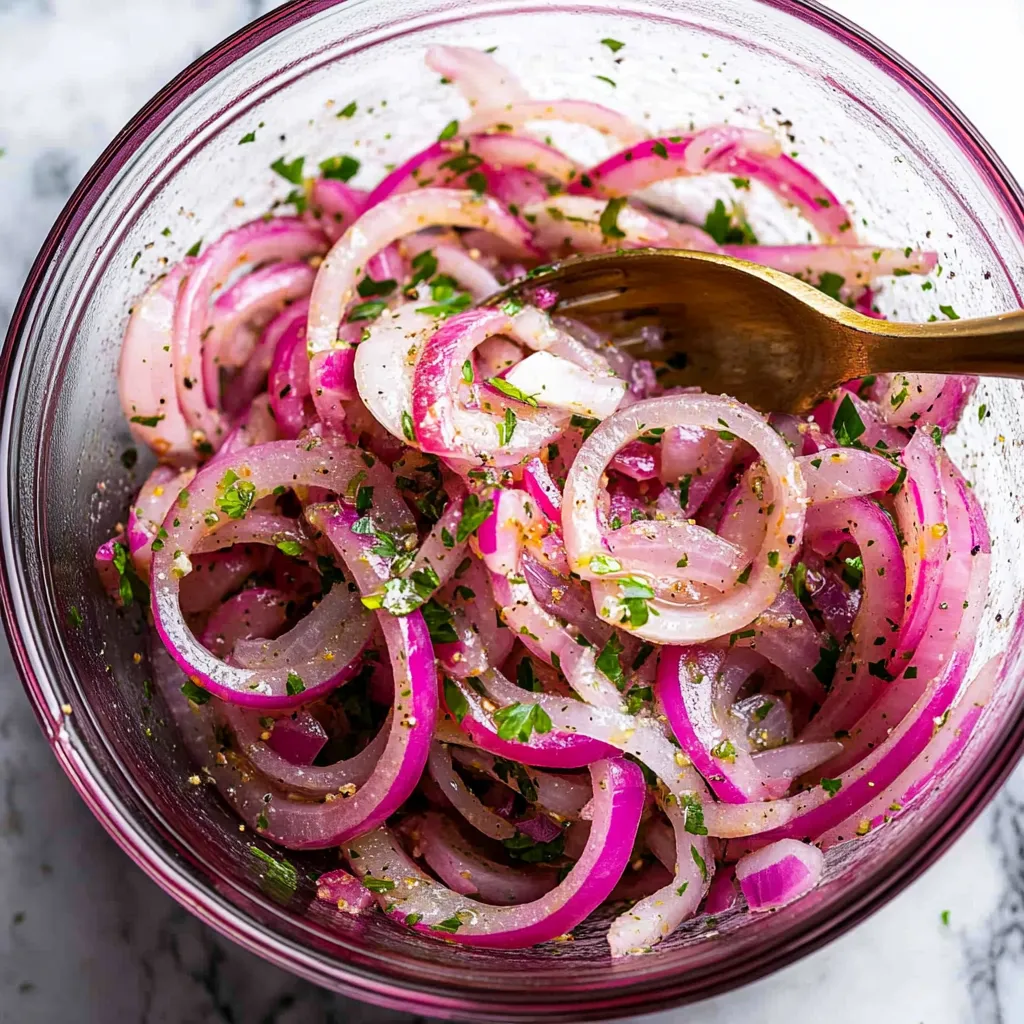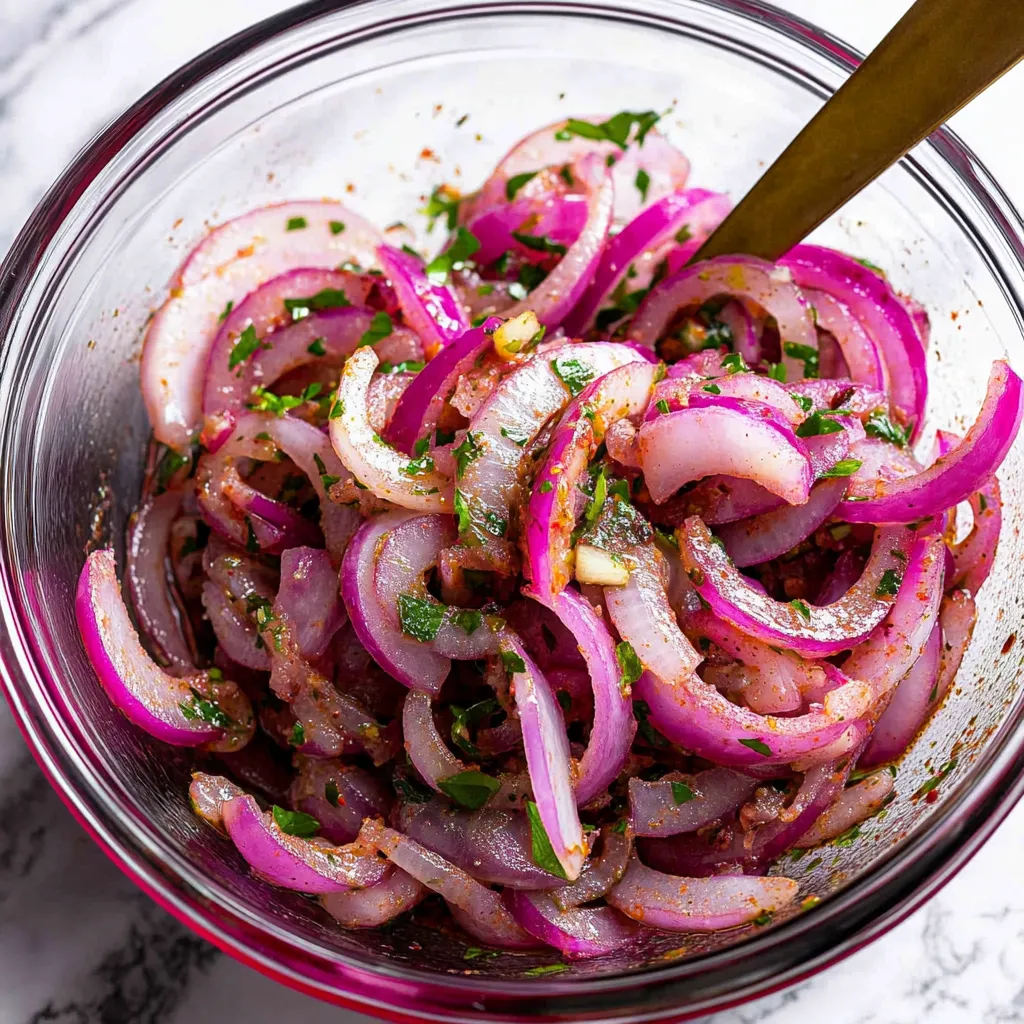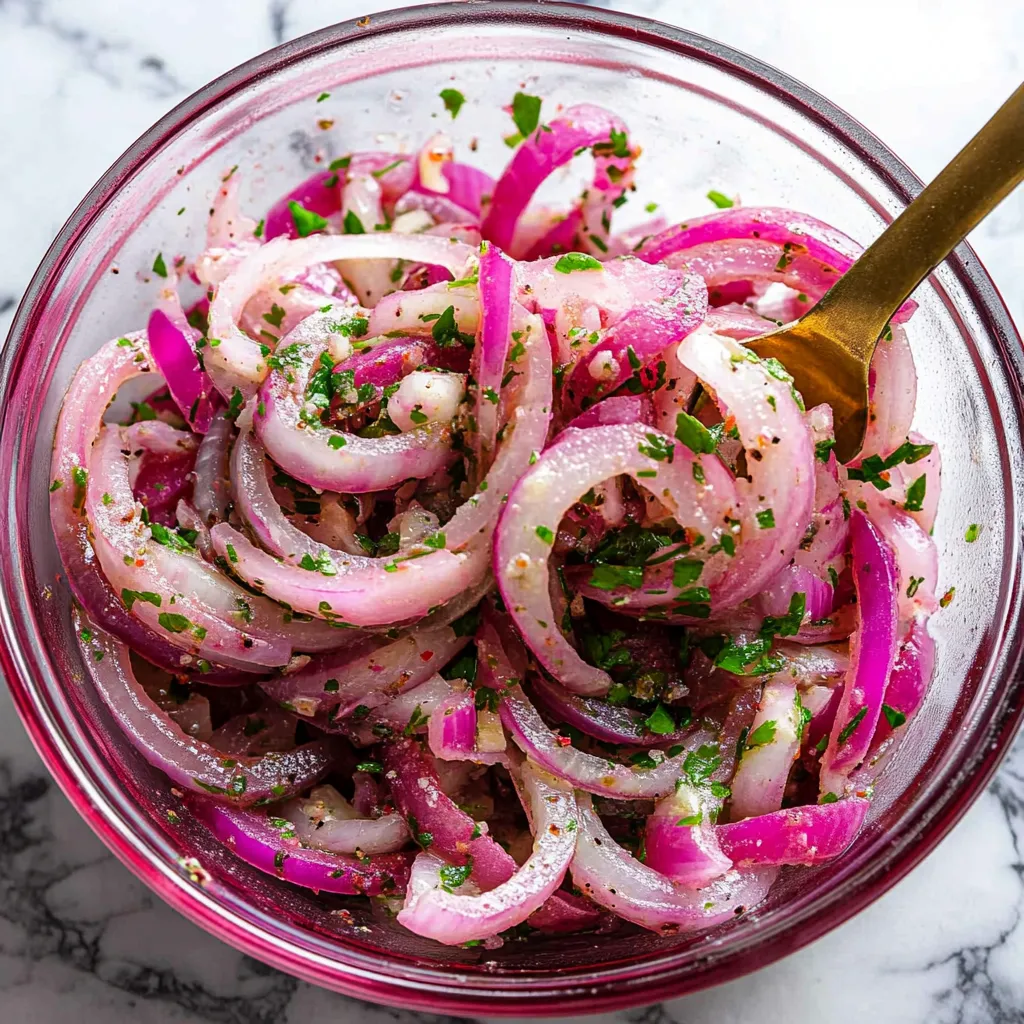 Pin it
Pin it
Sumac onions are my favorite way to add a zesty lift to wraps and rice bowls without much effort. Bright with lemon and aromatic herbs, they’re a five-minute trick that makes everything taste fresh and exciting. If you need a new go-to side for grilled dishes or a condiment for your favorite sandwiches, this one is it.
I discovered sumac onions years ago at a family barbecue and have since used them on everything from kebabs to grain bowls. Now my friends always ask for the recipe.
Ingredients
- Large red onion: The classic onion for sumac onions since it is naturally sweet and its color makes for a beautiful topping. Look for firm onions with crisp shiny skin.
- Sumac: This vibrant red spice adds bright citrusy tang. Use a fresh batch for the punchiest flavor and aroma.
- Salt: Essential for softening the onions and letting the flavors meld. Fine sea salt dissolves most evenly.
- Red wine vinegar or lemon juice: I like red wine vinegar for depth but lemon keeps it lively. Fresh juice is best for lemon.
- Extra virgin olive oil: Adds silkiness and roundness to balance all the tart notes. A good fruity olive oil really shines here.
- Fresh parsley: Brings green freshness and color. Choose flat leaf parsley for the most flavor.
Step-by-Step Instructions
- Slice the Onions:
- Cut the red onion in half from root to tip then peel and slice as thinly as possible. Thin slices absorb more flavor and have the best texture.
- Massage the Onions:
- In a medium bowl add the onion slices, sumac, and salt. Use your hands to gently squeeze and toss the onions for at least one minute. This helps soften them and takes away their sharp bite.
- Add Remaining Ingredients:
- Drizzle in the red wine vinegar or lemon juice followed by olive oil. Scatter over the chopped parsley. Mix everything together thoroughly so the onions are coated.
- Marinate:
- Cover the bowl and let sit at least twenty minutes at room temperature for the flavors to blend. You can also refrigerate them for up to four days. The longer they rest, the more mellow and flavorful they get.
- Serve:
- Use tongs or a fork to transfer the onions to your dish. Serve them as a side salad or pile on top of grilled meats or vegetable wraps.
 Pin it
Pin it
My stand-out ingredient is the sumac. Its zippy taste transforms simple onions into something memorable. I grew up thinking onions were just for cooking, but I’ll never forget how my aunt first served these raw with lemon to brighten up our dinner spread.
Storage Tips
Transfer leftover sumac onions to a glass or ceramic airtight container. They keep crisp and flavorful in the fridge for up to four days. If you notice any strong sulfur smell or the texture turns slimy, it is time to toss them. For best results, let them come to room temperature before serving since the olive oil may thicken when cold.
Ingredient Substitutions
If you cannot find good red onions, try sweet white onions or shallots for a milder flavor. In a pinch, lime juice can take the place of vinegar or lemon. For added depth, toss in a few fresh mint leaves along with parsley. Any fresh soft herb can work well.
Serving Suggestions
Sumac onions are a classic topping for Middle Eastern kebabs and shawarma. They are fantastic in pita sandwiches, folded into salads, or spooned over roast vegetables. For an unexpected twist, add them to turkey burgers or your favorite grain bowl. Their acidity and freshness balance out rich or spicy mains.
 Pin it
Pin it
Sumac onions will liven up even the simplest dinner, and they have become a fun tradition in my kitchen. I hope they will find a spot at your table too.
Frequently Asked Questions
- → What does sumac add to onions?
Sumac brings a bright, lemony tartness that balances the sharpness of the onions and enhances overall flavor.
- → Can I use yellow or white onions instead?
Red onions are traditional for their color and sweetness, but yellow or white onions can be used if preferred.
- → How long do marinated onions keep?
Stored in an airtight container in the fridge, sumac onions stay fresh for up to four days.
- → Should I choose red wine vinegar or lemon juice?
Both give tang; lemon juice offers brightness, while vinegar offers a deeper acidic note. Use your preferred taste.
- → How can I serve sumac onions?
Sumac onions shine on grills, burgers, sandwiches, wraps, or as a zesty salad side.
